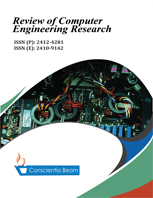Numerical and Experimental Investigation of Meteorological Data Using Adaptive Linear M5 Model Tree for the Prediction of Rainfall
DOI:
https://doi.org/10.18488/76.v9i1.2961Abstract
Predicting a class with a continuous numeric value encounters many problems when applying machine learning to the data. Only a few machine-learning techniques can do this, but it is still considered one of the most complex tasks to perform. In this study, we demonstrate one of the techniques called the M5 Model Tree, which can handle continuous numeric data. This technique is a stepwise algorithm and uses linear functions at the leaf nodes of any decision tree inducer (like CART) constructed. These M5 model trees generate simple practical formulas like standard deviation (SD), standard deviation reduction (SDR), cost-complexity pruning (CCP), etc., which can be easily applied by another user to some other benchmark data. This work assesses the abilities of the M5 Model Tree algorithm for the assessment of rainfall data across the Kashmir province of the Union Territory of Jammu & Kashmir, India. The construction of the M5 model tree developed using (70–30) % training and test ratio, respectively, was considered one of the best fit models, predicting an RMSE of 2.593, an MAE of 1.68, and a correlation coefficient (R2) of 0.478. Moreover, M5 model trees use a small number of trails to develop the models and thus need less computational time and are therefore more convenient to use.





